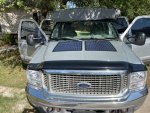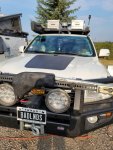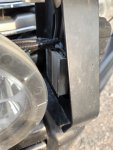I'd love for someone to do a true A/B test with a pair of same-make panels - one on the hood and one off, just to get a sense of any change in panel efficiency. The panels will absolutely make power even when they're hot, but the math says they make a lot less, so I'd be cool to see the real-world impact.
To me the issue isn't heat is bad (obviously it is) the issue should be is the heat on sheet metal in the sun of the hood more or less the same as the roof, and if it is what difference does it make? Going to be losing efficiency in both places the way you mount a flexible panel.
To really make the test you need: 1 A cold soaked vehicle in a shelter under a battery load. Then roll it into the sun and see the capacity. 2 Then leave it in the sun until the temp stabilizes from the solar load and see what the capacity is. 3 Then go heat soak the engine and see what the capacity is.
I think the big drop in efficiency comes from between step 1 and 2 in the hypothetical test not 2 and 3.
The thing I don't get is, whatever the efficiency drop is, being on the hood with a hot engine lasts a few hours right after a long period of alternator charging and then goes away for as long as the vehicle is off. So how is it remotely a factor? You lose efficiency at a time when you least need it temporarily and then for days on end as you sit in camp everything is as good as it could be otherwise.
I don't have anywhere else to mount the panels and I don't want to deal with storing temp ones so for me it's a moot point but I am curious just for science what the actual results would be. I suspect and intuit the hood isn't as bad as everyone thinks nor do I think the efficiency drops that much because sheetmetal and panels in the sun get really hot regardless. But I would love to know actual facts either way too.
I was a lot more dubious on hood mounting and heat soaking right up until I burned myself for the 10th time working on my panels on a vehicle that had not been run in days. Burning myself on the hood. Burning myself on panels lying in the grass. Burning myself on panels that had been hanging just by bungies in the air. Clearly most people have no idea how hot this stuff gets just from the solar load alone. Install these things in the sun on a 90 degree day with no shade and you will began to question how much extra heat the engine is really adding to the equation like I began to.



